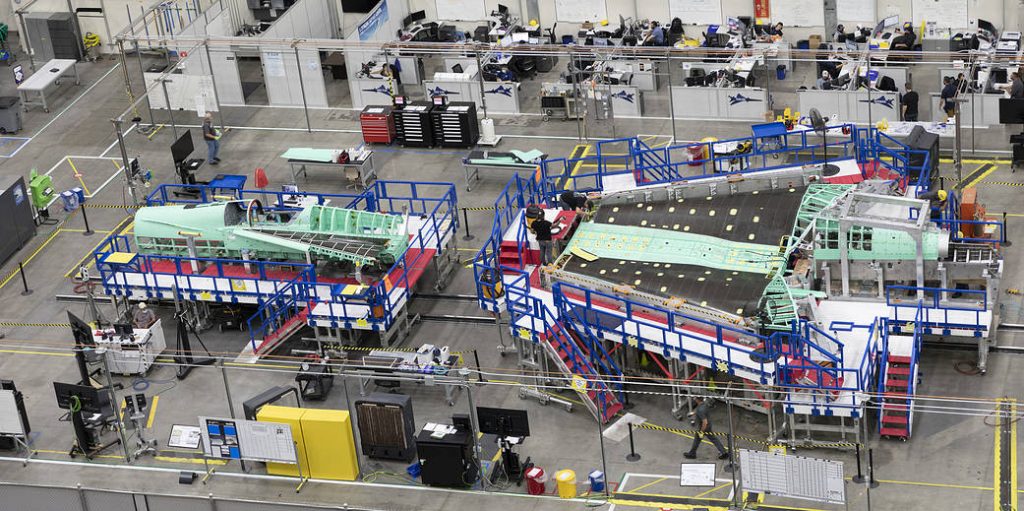NASA’s X-59 Takes Shape
by Kerry Lynch – Jan 4th 2021 AINonline
While NASA revised its timeline for the X-59 Quiet SuperSonic Technology (QueSST) demonstrator to reflect anticipated first flight in 2022, the agency remains encouraged that construction of the X-plane had reached the halfway point by late last year despite complexities associated with the pandemic.
In a recent update, the agency said assembly of the Mach 1.4 aircraft “made great strides” in 2020 as work progressed on the flight deck, wings, and other hardware. In addition, GE Aviation delivered the F414-GE-100 engine that will power the X-59 QueSST in the third quarter. Program partner Lockheed Martin is assembling the aircraft at its Skunk Works facility in Palmdale, California, under a $247.5 million NASA contract.
One significant recent milestone was the closing of the wing section, which NASA termed as the “structural backbone of the aircraft.” Completed in November, the milestone marked the first major assembly to be closed and clears the way for the joining of other key components, including the fuselage and tail.
“The fact this is the first time we’ve reached a milestone like this…It reminds us the X-59 really is coming together,” said Steve Macpherson, who leads the Lockheed Martin team building the X-59.
NASA in September had updated the schedule, anticipating completion of final assembly this year and first flight in 2022. The X-59 QueSST will be used to test the effects on supersonic sound of new advanced technologies over various population centers. NASA anticipates that community testing will start in 2024.
The X-59 incorporates a number of unusual features, including the lack of a forward-facing window, designed to “quiet” the sonic boom associated with supersonic flight. The result, program managers anticipate, will be a sonic “thump” that is much quieter than the sonic boom long associated with supersonic travel. Resulting data will be furnished to regulators for use in evaluating future rules regarding supersonic operations.
To compensate for the lack of a forward-facing window, NASA and Lockheed Martin are incorporating an eXternal Vision System (XVS) involving cameras to give the pilot the forward-facing view. The XVS system also was tested in 2020.

1011 Lockheed Way, Palmdale, Ca. 93599




